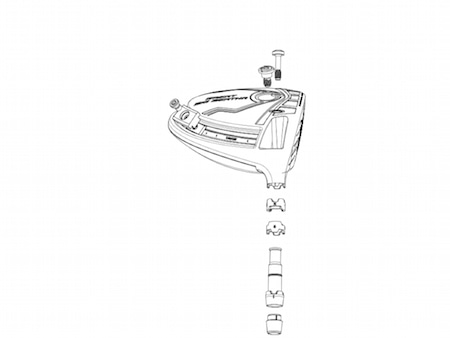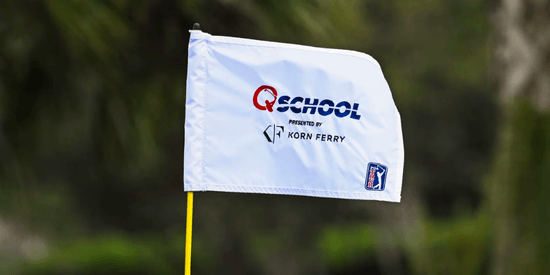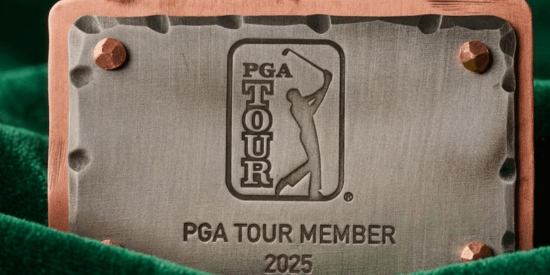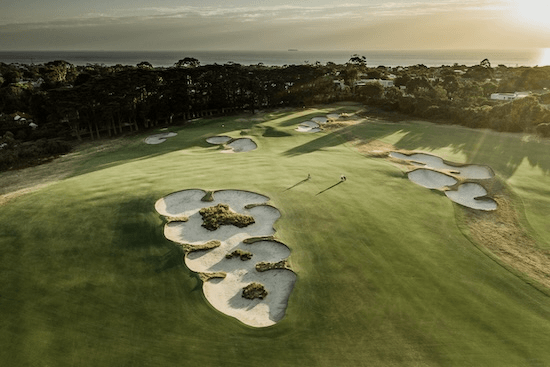LEAVE NO YARD BEHIND: A Callaway Driver Distance Study
7/31/2015 | by
see also: Sponsor News

Getting more distance requires more than simply hitting the ball harder. Callaway knows what it takes to maximize drives
The Problem
Each year we fit more than a thousand golfers for Callaway equipment at our fitting facilities in Carlsbad. They run the gamut in terms of skill and style: Low, middle and high handicappers. Long and short hitters. Straight and crooked hitters. That’s allowed us to collect a tremendous amount of data that we can analyze to help us determine where golfers need the most help.
One of the more interesting insights we’ve gathered from fitting so many golfers pertains to how few of them reach their distance potential off the tee. Given a golfer’s clubhead speed, it’s simple to calculate approximately how far he or she could consistently hit the ball if they made center-face contact for maximum ball speed, if they generated the right launch conditions, and if their shots went straight. That intrigued us.
Today’s drivers are more technologically advanced than ever, yet the majority of golfers aren’t coming close to the distance they’re capable of achieving on the basis of swing speed. That inspired us to conduct a study -- our most extensive ever -- using a broad range of recreational players of all skills and styles, to get a clear idea of how far golfers are falling short of their distance potential, and why.
What we learned surprised us. Although today’s advanced technologies have made drivers faster, more forgiving and easier to launch than ever, we found that the average golfer in our study could be hitting the ball 21.5 yards farther. Which proves the point that Golf Digest equipment editor Mike Stachura made recently when he wrote “Golfers aren’t taking advantage of the game’s increasingly sophisticated technology.”
Problem #1: Low Ball Speed
The more ball speed you generate, the farther the ball can go. Ball speed is largely a product of what clubmakers and clubfitters call “smash factor,” which is a measurement of your quality of contact (the ratio of your head speed to your ball speed).
Today’s drivers have higher MOI measurements than ever, making them more stable and resistant to twisting on off-center hits, which helps them preserve ball speed. And modern clubfaces flex faster on off-center hits, again to help preserve ball speed. However, we found that smash factor is where the great majority of golfers have the most room for improvement and where they can pick up the most yardage.
Solution: R•MOTO Technology
Our R•MOTO clubface technology increases ball speed on mis-hits in two ways. First, it employs a system of internal ribs that add strength to the perimeter of the clubface, promoting faster ball speed and more distance on high and low impacts. Second, it features Callaway’s renowned Variable Face Thickness (VFT) technology wherein the thickness of the face varies, becoming thinner in strategic places to expand the area in the middle of the face that delivers fast ball speed.
Solution: Multiple Shaft/Head Weight Configurations
Our studies indicate that every player has an ideal combination of total club weight and swing weight that encourages his or her best rhythm and tempo, and good rhythm and tempo are critical to consistently hitting the ball with the center of the face, the place that generates maximum ball speed.
That’s why we offer Great Big Bertha in multiple weight configurations (via 4 weight classes of shafts), to help golfers achieve a consistently high smash factor.
Your best combination of swing speed and smash factor will come from finding the specific shaft weight that allows you to use the lightest shaft that still enables you to control the club to consistently make contact in the middle of the face. Aiding swing speed in the Great Big Bertha is one of our most aerodynamic head shapes ever created, featuring our lightest crown ever. This head design also maintains stability to help promote solid contact.
Problem #2: Poor Launch Angle & Spin-rate
It’s been well documented that combining a high launch angle with a low spin-rate will make the ball go farther. But although many drivers today are engineered to keep the spin-rate down, and offer adjustable loft to bring launch angle up, most golfers aren’t reaping the benefits.
Low CG w/ Forgiveness
Great Big Bertha features a sophisticated design that pulls the center of gravity low in the head and rearward, away from the center of the clubhead, to make it easier to launch the ball at a higher angle.
Solution: OptiFit Technology
OptiFit Technology allows you to adjust the loft to promote the proper launch angle. The clubhead’s CG is precisely positioned to keep backspin to a minimum. With the OptifFit hosel appropriately configured to the needs of each individual player, the result is a high launch angle and low spin-rate, the launch conditions that promote maximum distance.
Problem #3: Dispersion / Sidespin
The straighter you hit the ball, the more yards you’ll net and, usually, the shorter your next shot will be on par-fours and par-fives. Sidespin is what makes a shot peel off to the left or right; too much sidespin results in a slice or hook, both distance-killers. Thus, if you keep sidespin to a minimum, your shots will go straighter and farther.
Solution: Adjustable Perimeter Weighting
Technology Adjustable Perimeter Weighting (APW) technology allows you to shift 10.5 grams of weight along the rear perimeter of the clubhead. This changes the “virtual Center of Gravity” of the club, which influences the amount of gear effect. The result is a reduction in sidespin of up to 400 RPM, which leads to a straighter flight.
Our tests indicate that APW delivers up to 18 yards of direction-correction, which can dramatically tighten a player’s dispersion, promoting more distance.
Solution: Mass Properties –Designing and Engineering Great Big Bertha
Incorporating all of Great Big Bertha’s distance-enhancing technologies into one club- head was a challenge that could only be met by making a huge effort to save weight within the clubhead, which we call “mining weight.” It’s a painstaking process of scouring every cubic centimeter of the inside of the head to find every possible place we can save weight - a quarter-gram here, a half-gram there. Crucial areas where we saved weight in Great Big Bertha include the composite crown, which is our thinnest ever; the internal walls of the hosel; and the joints that bond the crown to the head structure and the clubface to the head are slimmer and lighter than ever.
The Payoff: Reality vs. What’s Possible
Given a favorable launch angle, spin-rate, smash factor and shot direction, this is the distance attainable at clubhead speeds from 70 to 110 mph. If you’re like most golfers, you aren’t close to the yardage you’re capable of getting. In our most comprehensive recreational golfer study ever, our testers averaged a 1.44 Smash Factor, Launch Angle of 11.3 degrees, and 3,326 RPM backspin, resulting in them leaving an average of 21.4 yards on the tee box.
Conclusion
Great Big Bertha is engineered to specifically address each of the variables that cost golfers distance -- smash factor, launch conditions, direction – and this makes it a favorable choice for golfers who want to add more yards to their drives. However, it’s essential that the player configure the adjustability technologies appropriately and be fit for the proper head/shaft weight combination in order to achieve the maximum yardage increase.
Throughout the design and engineering process that went into creating Great Big Bertha, our guiding principle was this: Leave No Yard Behind.
Most Popular Articles

2025 PGA TOUR Q-School Guide: Sites, Scores, and Who Advanced
Dec 5, 2025Second Stage is complete and Final Stage awaits at Sawgrass — follow every Q-School leaderboard and the players still chasing
2025 LPGA TOUR Q-Series: Final Qualifying Stage FINAL SCORING
Dec 8, 2025Helen Briem earns medalist honors, 31 players headed to the LPGA next year
2025 PGA TOUR Q-School Final Stage: Ewart Leads Five New TOUR Card Winners
Dec 14, 2025A.J. Ewart topped Final Stage at TPC Sawgrass, leading five players who secured PGA TOUR membership for 2026.
Australian Open at Royal Melbourne: Preview, amateur bios, and how to watch
Nov 30, 2025Rory McIlroy headlines one of the championship's top fields in years - at least four amateurs will have their chance at gloryInside Gil Hanse’s Restoration of Baltusrol’s Upper Course: A Return to Tillinghast’s
Dec 11, 2025Renowned architect Gil Hanse reveals how he brought Baltusrol’s Upper Course back to life by honoring A.W. Tillinghast’s originalLoading latest news...
